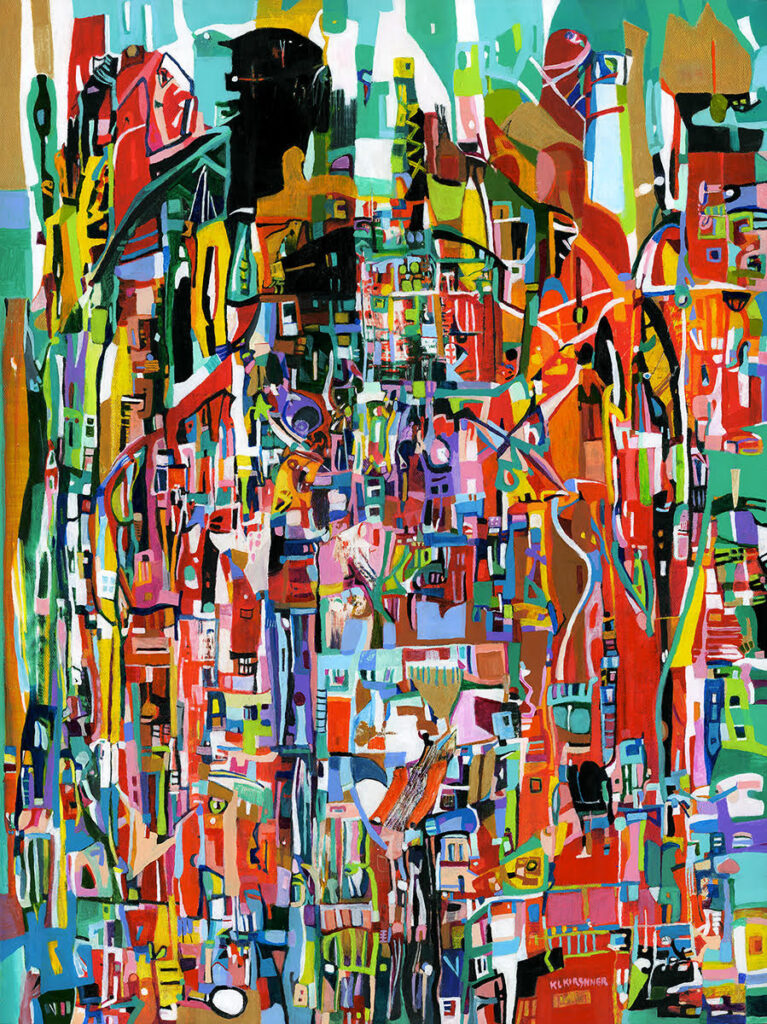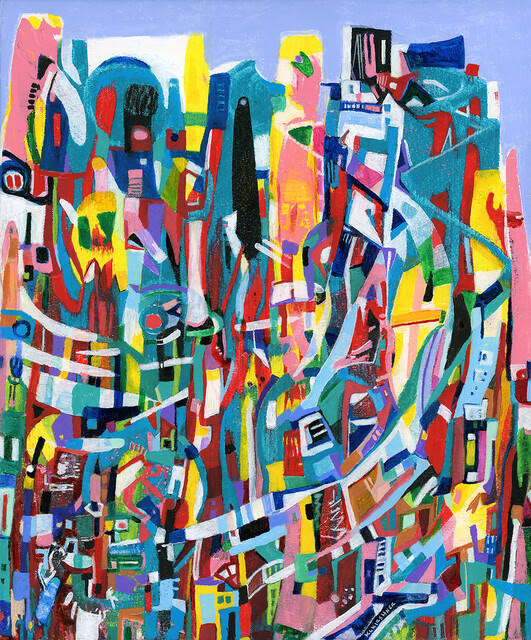
The painter Karen L. Kirshner has a sunny disposition which translates into ebullient, sun-flecked paintings. Each of her roughly 20 abstracts, recently on view at the George Billis Gallery in Chelsea, is imbued with a mirage of swirls, shapes circles, lines, dots, and geometric squiggles which blanket the canvas.
They appear to be disconnected but on close viewing, they are intertwined. Consider a Bach oratorio. If the flute player is asleep at the music stand, something essential would be missing. The music would not be transporting. It’s the same with Kirshner’s acrylic on canvas abstractions. Every brush stroke has its essential role in creating a canvas that is vivid, radiant, and joyful.
Kirshner says she is her worst critic. “I tweak my paintings to death,” she says. “This process helps me to resolve issues and have useful insights.” She has been inspired by the early work of Philip Guston, especially his Abstract Expressionist works of the 1950s and the surrealist style of Joan Miró. Kirshner has also been strongly influenced by Wassily Kandinsky, one of the pioneers of abstraction in western art. Like these early Abstract Expressionist painters, Kirshner’s luminescent colors express her innermost feelings.
In viewing Kirshner’s paintings, don’t look for recognizable motifs. Hers is not narrative work, although after concentrating on each painting as if it was a Buddhist mandala, you might recognize a bird or some religious Jewish imagery. “I deliberately choose difficulties as a challenge,” says Kirshner adding that “the more impossible it seems, the better.”
In her studio on Long Island, Kirshner says she is so absorbed in her paintings that “the rest of the world disappears.” She admits to falling into a meditative state where “time is non-existent.”

Kirshner came from a family surrounded by art and culture. Her mother, Betty B. Kirshner (1929-2015), was a nationally awarded humanist expressionist who exhibited in both solo and group shows across the country. Kirshner always knew she was an artist, but her path to painting full-time was circuitous. As a young woman she was admired and awarded for her intricate pen and ink compositions, even in high school in a gifted art program. She studied at the Arts Students League, Vassar College, and various art schools in England. In those post college years Kirshner was more interested in graphics than painting. “I didn’t do art, but was always doodling, elaborate black-and-white pen and ink drawings.”
Kirshner stepped away from professional life as an artist for at least 25 years and went back to it just before her mother died. “I should have become a full-time artist much sooner, but I chose instead to pursue a more profitable path as a marketing professional and out of financial necessity, at times as an educator.” After 2016, Kirshner says she threw herself into art, winning national awards and having her first gallery solo show.
“As I became better known and started to receive awards for my work, I was once advised to switch from abstract to landscapes and more figurative work like my mother,” she says, “I would not let anyone tell me what I should or shouldn’t paint.”
Shaped by the moment and responsive only to her personal lexicon, Kirshner’s beguiling abstracts exude a ferocious energy. Imbued with sunlight, her dynamic paintings have an honored place among contemporary abstract expressionists.
Kirshner has received numerous prestigious awards. Her works are featured in private collections both in this country and abroad. G&S
For more information: karenkirshner.com – George Billis Gallery 212-645-2621.





Thank you so much for that excellent review of my work!